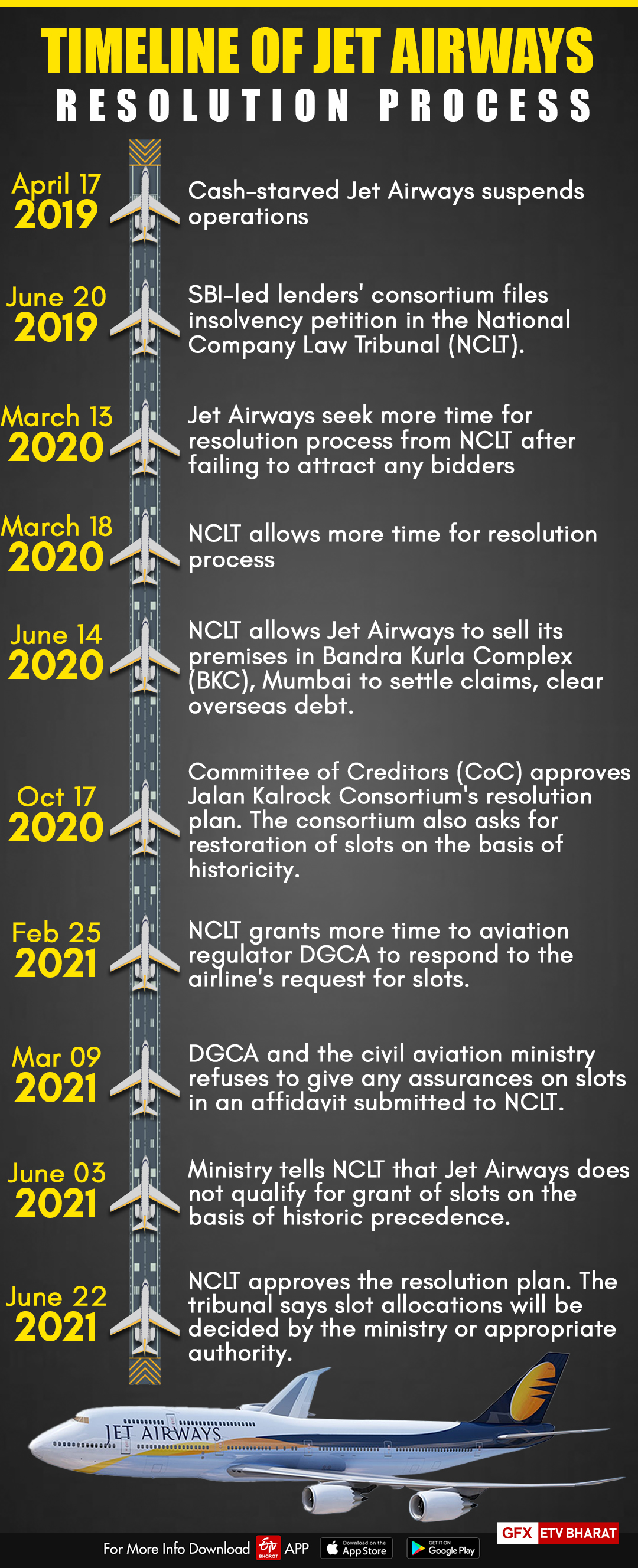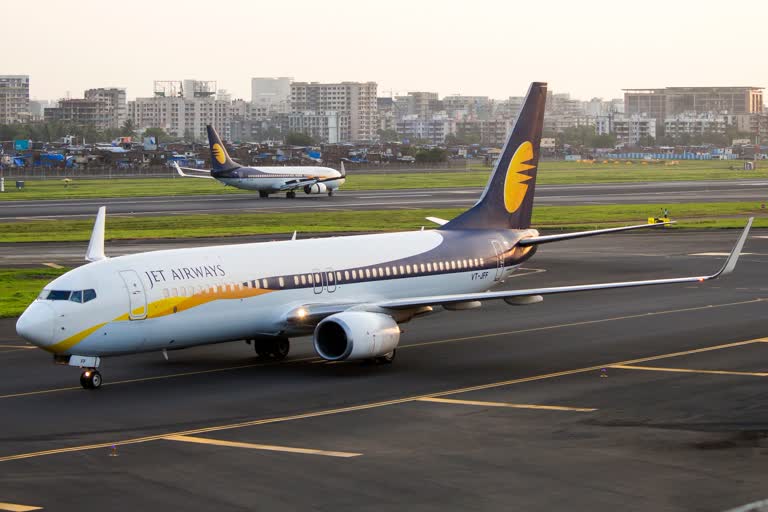Mumbai: With the National Company Law Tribunal (NCLT) giving its approval for the revival plan submitted by a consortium of London-based Kalrock Capital and the UAE-based businessmen Murari Lal Jalan, Jet Airways is expected to start functioning by the end of this year. While the new owner is set to face several challenges like the firm's massive debt, dues to employees, airports, ground handlers, etc the real challenge for Jet Airways 2.0 will be its ability to regain the slots it lost to other airlines since it was grounded in April 2019.
Approving the revival plan of the consortium on Tuesday, the Mumbai Bench of National Company Law Tribunal (NCLT), chaired by Mohammed Ajmal and V Nallasenapathy, said it was not giving a direction on the issue of slot allocations and it will be handled by the government or the appropriate authority.

After the lenders gave their approval to the resolution plan in October 2020, airline's Resolution Professional Ashish Chhawchharia had approached NCLT stating that the "slots are a vital part of the plan, and it is important that the Directorate General of Civil Aviation (DGCA) and the Ministry of Civil Aviation (MoCA) submit their stance on the same".
However, DGCA and MoCA, in their affidavit, had submitted that Jet Airways does not qualify for grant of slots based on historic precedence and the airlines will get slots only based on 'Slot Allocation Guidelines'. "Jet Airways does not qualify for grant of slots on the basis of historic precedence and the submission of the Jet Airways that it is in operation for the last 25 years is not a criterion for claiming historicity. Thus, the claims are wrong and denied," said the affidavit that was filed earlier this year.
Before it was grounded, Jet Airways had more than 440 slots in various airports across the country. In the wake of the collapse of the airlines, the MoCA started allocating vacant slots to other airlines. Airport slots give an airline the right to take off and land at a designated airport and at a specific time. The operational viability, as well as profitability of an airline, depends on the number of slots it holds in various geographies.
The Rise and Fall of Jet Airways
Jet Airways started off as an air taxi operator on May 5, 1993, with a fleet of four leased Boeing 737-300 aircraft. Naresh Goyal-led airline became a scheduled carrier in 1995 and operated its first international flight from Chennai to Colombo in March 2004. Since then it had not looked back and went on to dominate the Indian sky until the dawn of low-cost airlines like Air Deccan which offered flight tickets for as low as Rs 1.
To survive the competition, Jet Airways launched new low-cost services like Jet-Lite but could not succeed. The acquisition of Air Sahara also proved costly for Jet Airways. In 2012, Jet Airways started facing the heat and was forced to implement cost-cutting measures.
To keep up with the market, Jet airways partnered with Etihad, which offered a sigh of relief to some extent. The trouble, on the other hand, was certainly was not over, instead it was brewing. The oil prices were on a record high and to maintain the market leadership, Jet was forced to keep the fares low. Finally, falling reserves and decreasing operating profits led to a cumulative debt of over Rs 8,000 crore and forced the airlines to suspend operations in April 2019.
Also read: NCLT approves Jalan Kalrock Consortium's resolution plan for Jet Airways



